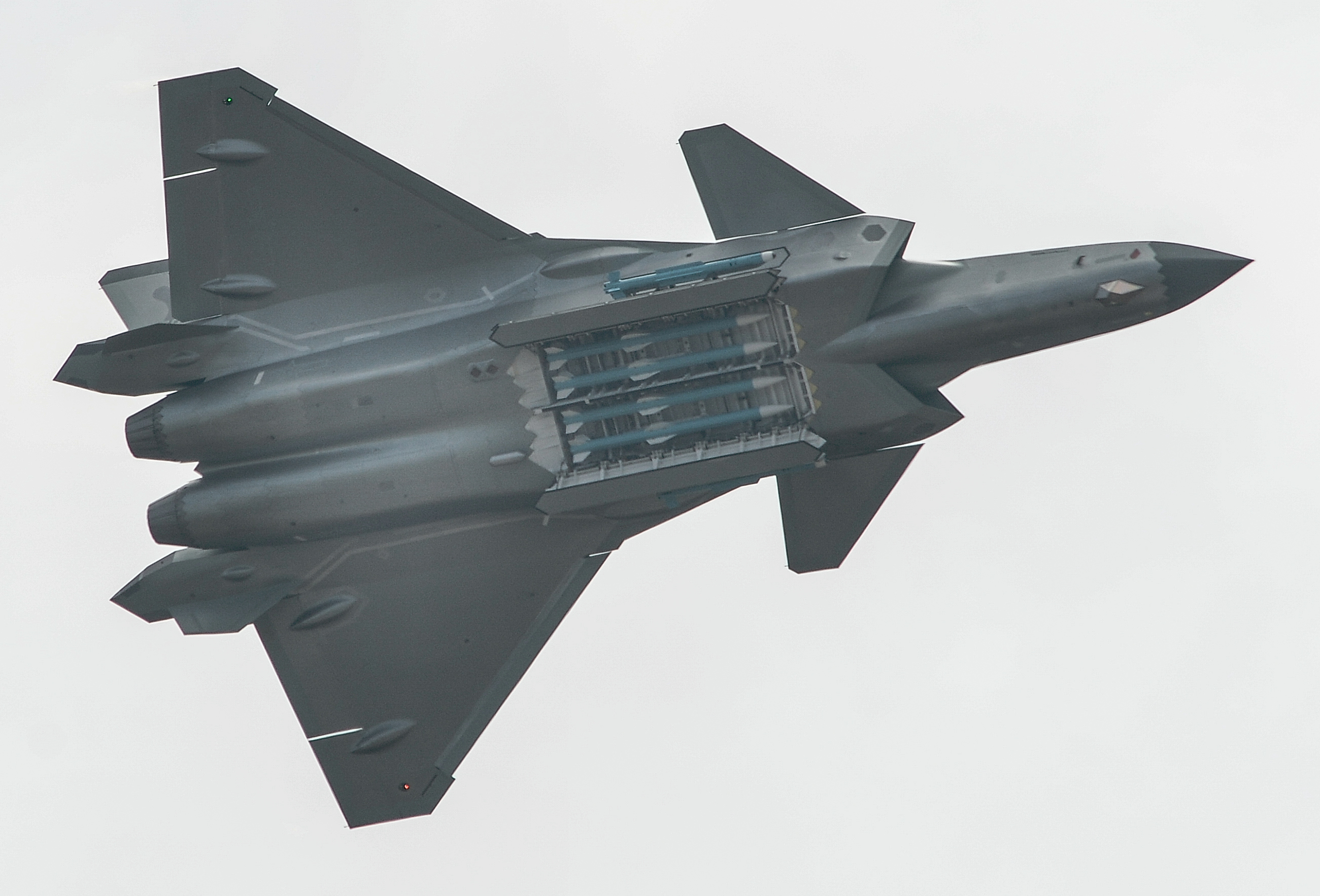China’s J-20, a fifth-generation stealth fighter jet, has reportedly entered the mass production phase after replacing the Russian engine with the domestically produced WS-10.
Traditionally, Chinese jets have been powered by Russian-made engines, which have a relatively shorter service life. China has long aspired to develop its own engine and achieve maximum flexibility, thereby getting out of the limitations the Russian engines create.
In September 2021, two J-20 stealth aircraft made their debut with the domestically-built engines at the opening ceremony of the Zhuhai Air Show in south China’s Guangdong Province.
According to the state-run Global Times, the J-20 ‘Mighty Dragon’ recently set records in terms of aircraft deliveries due to great demand, with experts claiming it has reached the mass manufacturing phase after being outfitted with the domestically made engine.
All PLA eastern, southern, western, northern and central theater commands will soon operate J-20 stealth fighters as the jet’s production ramps up. They will become the main force to safeguard China’s sovereignty and territorial airspace security: experts https://t.co/xLEtqRy9wY
— Global Times (@globaltimesnews) December 12, 2021
Chengdu Aircraft Industrial Group Co Ltd has been dealing with difficult research and development, production, and delivery missions since the beginning of the fourth quarter, the company said in a statement posted on its social media account.
The corporation accomplished several significant test flight missions during this time, and indexes related to aircraft delivery have reached new heights. Seven of the nine images linked to the statement show J-20 test flights, one shows a J-10, and one depicts staff members’ work. This could indicate that J-20 production is ramping up, according to Fu Qianshao, a Chinese military aviation expert, as quoted by Global Times.

The shift to domestically produced WS-10 engines from Russian-made ones has enabled mass manufacturing, said Fu, who also noted that other systems aboard the J-20, such as the avionics, radar, and weapons systems, were already built locally.
The Mighty Dragon now is in a position to enter mass production, since there are no restrictions imposed by engine imports, and the homemade WS-10 engine has already been tried and tested on other aircraft such as the J-10, J-11, and J-16, Fu said.
“We will see J-20s operated by all eastern, southern, western, northern, and central theater commands in a short time,” Fu said, “and they will become the main force to guarantee China’s sovereignty and territorial airspace security.” The J-20 will continue to evolve in the future, with Fu predicting that it would switch to more modern engines.
Why Is China Dumping Russian Engines?
In the early 1990s, the PLA Air Force was dependent on imports and reverse-engineering of Russian combat aircraft and related technologies, but it has lately moved to a stage where domestically manufactured assets are joining service at an unprecedented rate.
The move is part of Beijing’s concerted efforts to achieve greater self-sufficiency in defense production.
The J-20 appears to have become a symbol of China’s military power, and it has been highlighted frequently in military parades and air shows. China sent two J-20s to air bases in Xinjiang after a deadly clash with Indian forces on the disputed border last year.
However, the J-20 has been hampered by a paucity of high-performance jet engines that are both efficient and long-lasting.
As per the South China Morning Post, China cannot rely on the Russian engine since Moscow wants Beijing to buy more Su-35 fighter jets in exchange for the AL-31F engine sales. China was the first foreign customer to purchase Su-35 planes and spent US$2.5 billion on 24 Sukhoi Su-35 single-seat multi-role fighters.

Chinese experts believe that, aside from the Su-35’s longer combat range, the Su-35’s radar, navigation system, and other electronic components are substandard to Chinese aircraft such as the J-16 strike fighter.
According to a 2017 report from the Center for Strategic and International Studies’ China Power Project, the WS-10 engines would provide the J-20 low supercruise capability, implying they could operate at supersonic speeds for extended periods of time.
By equipping the aircraft with a local engine, it is believed that the J-20 is now capable of improving its already unsatisfactory thrust-to-weight ratio. It may also relieve the Chinese defense industry from their reliance on Russian-made jet engines in the future.
- Contact the author at ashishmichel@gmail.com
- Follow EurAsian Times on Google News




